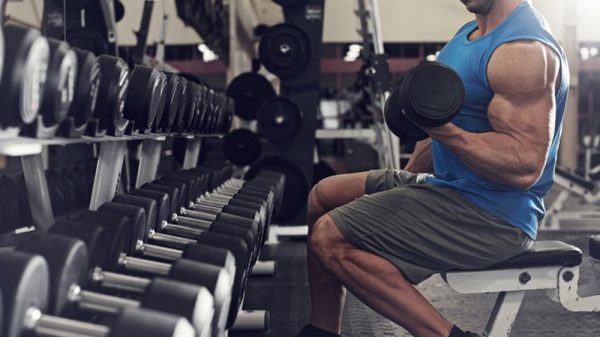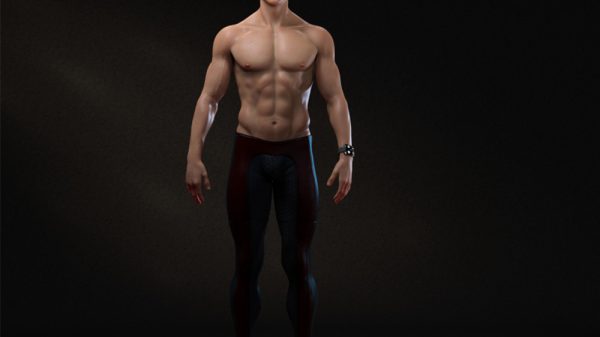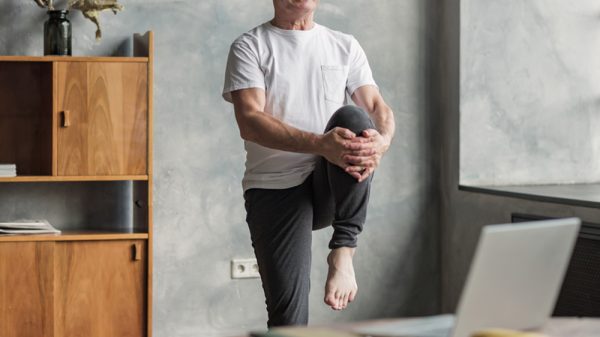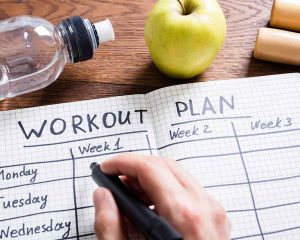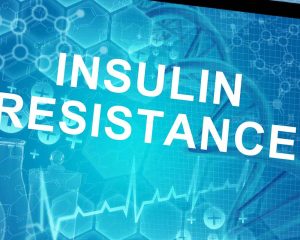At some point or another, all of us have experienced the instinctive reflex to stretch upon waking in the mornings. We feel how a good stretch can warm up our muscles, preparing us to get out of bed and start the day. Flexibility is intertwined with our physical- and even mental- wellbeing. Keep reading to find out how to increase flexibility and why flexibility is important for overall health.
What Exactly Is Flexibility and Why Is It Important?
Being flexible doesn’t necessarily mean that you’re able to do back handsprings and the splits. Instead, flexibility refers to how readily your joints can move without resistance or pain. This movement depends on the flexibility of tendons, muscles, ligaments, and other tissues around a joint. (1)
Having a certain level of flexibility allows us to move painlessly throughout our daily lives. Flexibility enhances physical adaptability and helps your body respond to physical demands and stressors more easily. Similarly, inflexibility strains your joints and leads to painful, impeded movement.
Flexibility is essential for all muscle groups, and common areas that experience tightness or stiffness associated with inflexibility include hamstrings, quads, hip flexors, glutes, knees, upper back, and lower back.
Let’s take a look at a wide range of benefits of stretching and flexibility.
1. Allows for Greater Range of Motion
When the soft tissues surrounding a muscle become stiff, the joint is unable to move with ease. For example, let’s say that your hip flexor is experiencing tightness. The hip flexor encompasses many muscles that allow for movements involving your hip and femur, such as walking and jogging. Inflexibility in the hip flexor would probably cause pain and limited leg movement during walking and other normal activities. Stretching allows for the soft tissue to become more malleable around the joint. Having a full range of motion is also important for athletes, who must be agile and limber for optimal performance.
2. Lowers the Risk of Injury
Having tight muscles doesn’t just impair movement and range of motion. In fact, inflexibility can cause muscles to fatigue more quickly during exertion. Tired muscles are less effective in protecting ligaments, tendons, and joints, which can raise the likelihood of tears and stress fractures. When muscles are adequately stretched, they can function at full capacity, relieve joints and connective tissue of unnecessary strain, and lower the risk of injuries.
3. Promotes Healing
After an injury occurs, flexibility exercises will enhance the healing process. Hypomobility refers to the lack of movement associated with injury, surgery, or illness, and exacerbates inflexibility. On a molecular level, flexibility is disrupted because of capsulitis or fibrosis.
Capsulitis refers to inflammation of soft tissues that results from long periods of immobility. Fibrosis describes the growth of hardened scar tissue and the stiffening of cellular structures around an injury. Both conditions lead to inflexibility as collagen fibers in connective tissue are restricted by the development of cross bonds. (2)
Stretching is critical to combatting hypomobility by helping destroy cross bonds, increasing blood flow and oxygenation, and preventing inflammation and scarring. For invasive surgeries, like hip replacement or knee surgeries, stretching during the recovery stages is critical for regaining the full function.
Interestingly, a study conducted on more than 60,000 elderly patients with arthrofibrosis – knee inflammation from surgery or injury – revealed that high intensity stretching combined with physical therapy proved to be more effective in decreasing rates of rehospitalization than physical therapy alone. (3)
3. Supports Aging Muscle
During the aging process, cellular mechanisms operate less efficiently, which causes all of the physical manifestations associated with aging, including difficulty moving and slow healing. Stretching for increased flexibility plays an important role in increasing circulation and carrying essential nutrients and oxygen to all of your cells.
Research shows that when combined with aerobic exercise, stretching has beneficial impacts on oxygenation of aging muscle tissue. (4) This may have clinical implications for elderly adults who are working to increase skeletal muscle function.
4. Enhances Overall Health
There is evidence that inflexibility is linked to other markers of health, such as the risk of cardiovascular disease. A study assessing middle-aged Japanese men found that body inflexibility may be an indicator of atherosclerosis, which is the accumulation of plaque on the walls of arteries. In particular, the study showed that inflexibility in the upper body was correlated with intima-media thickness, while core inflexibility indicated the presence of plaques in the carotid artery. Most interestingly, these results were independent of other potential contributing factors such as measures of cardiovascular health or strength. (5)
Keeping muscles limber may be a key to keeping your heart healthy.

Types of Stretches for Flexibility
If you’re looking for how to improve flexibility, it’s important to consider the intensity of stretches, the duration, and the frequency. (2)
- Intensity: The intensity of a stretch refers to how much force is applied to the resistance tissues. It’s important to strike a careful balance here, as stretching too hard can cause injury, and stretching too lightly can be ineffective.
- Duration: The duration of stretching refers to how long a stretching session lasts. High-intensity stretches may only last a matter of seconds, while low-intensity stretches tend to last longer.
- Frequency: Frequency refers to how often your stretching routine occurs. For example, maybe flexibility training occurs daily, or a few times per week.
If you’re looking for how to become more flexible, you need to blend intensity with adequate duration and frequency to yield desired results. The UC Davis Sports Medicine Department recommends engaging in a stretching routine every day and holding each stretch position for 30 seconds to 2 minutes.
Static Stretching vs. Dynamic Stretching
Static stretching is holding one stretching position, without movement. In contrast, dynamic stretching is movement-based and is intended to engage a certain muscle group throughout its range of motion. If you have a specific condition or injury, a personal trainer or physical therapist can help you determine which kind of stretching is best for you.
Yoga for Flexibility
Yoga poses include many flexibility exercises that improve physical performance in a range of activities. In a study assessing the impact of yoga on athletes, a biweekly yoga regimen was incorporated into training for 14 athletes, while the control group of athletes only participated in traditional pre-training warm-up stretches. After 10 weeks, results revealed that the athletes participating in yoga demonstrated improved flexibility and balance. (6)
Another study conducted on a group of 80 women revealed that just one week of yoga resulted in improved back pain and spinal flexibility. (7)
You can join a yoga class or do some poses right at home. Here are five yoga poses that you can incorporate into your daily life to increase your flexibility.
5 Yoga Poses to Increase Flexibility
Many yoga poses are excellent stretches for flexibility.
1. Downward-Facing Dog
This popular pose is a full-body stretch that will benefit multiple muscle groups. From a side view, your body will form a triangle with the floor and your hands and your feet will be touching the floor. Spread your fingers, keep your head down, and elongate your spine. Your legs should be resting on the balls of your feet, with your heels off the floor.
2. Reclining Spinal Twist
This is a great stretch for your lower back, shoulders, and chest. Begin by lying flat on your back, with your arms outstretched. Bring your knees together, bend them, and slowly lower them towards one side. Gently turn your head and shoulders in the opposite direction.
3. Standing Forward Fold
Begin by standing with feet approximately shoulder-width apart. Hinge at the hips and bring your upper body forward so that it hangs in front of you, stretching your back and hamstrings. Allow knees to slightly bend.
4. Cobra Pose
Lie on your stomach, keep your elbows close to your body, and place your hands on the ground as if you are going to do a push-up. Lift your chest off the ground, using your arms as support. The cobra pose is a great stretch for your chest, core, and back.
5. Child’s Pose
This is a stretch commonly incorporated towards the end of yoga classes because it is particularly relaxing and releases tension. Begin by kneeling, with knees apart. Allow your upper body to hinge forward, bringing your forehead to your mat and stretching your arms out in front of you. Bring your hips back as you reach.
Other Benefits of Yoga
Yoga is also well known for its ability to enhance mental well-being. Yoga is associated with mindfulness and peace of mind. Research assessing individuals with chronic illnesses revealed that a yoga regimen enhanced participants’ quality of life and decreased the perceived severity of their illness. (8)
Foods for Flexibility
It may seem counterintuitive that food has anything to do with flexibility. However, certain foods can contribute to inflammation that causes inflexibility. The right foods can support the health of your muscle and connective tissue and reduce inflammation. (9)
Amino Acids
Amino acids are crucial building blocks of muscle tissue, ligaments, and other connective tissues. Consuming enough essential amino acids will fortify your muscles as you stretch them and make sure that your connective tissue can regenerate efficiently. Great sources of essential amino acids include lean meats, eggs, whole grains, beans, and low-fat dairy products.
Vitamin C and Copper
Both vitamin C and copper play a vital role in collagen synthesis. Rich sources of vitamin C include broccoli, red pepper, citrus fruits, tomatoes, kiwi, kale, and cantaloupe. Copper-rich foods include sweet potatoes, shiitake mushrooms, cashews, chickpeas, lentils, and tofu.
Antioxidants
Antioxidant-rich foods help decrease free radical activity that damages cells and causes inflammation. Antioxidants are found in fruits and vegetables, like berries, spinach, and kale.
Calcium and Vitamin D
Adequate levels of calcium and vitamin D support immune health and strengthen bones. Yogurt and cheese are rich sources of calcium. Many are surprised to know that there are many nondairy sources of calcium as well, including broccoli, kale, collard greens, salmon, and chia seeds. Your body synthesizes vitamin D during sun exposure, and food sources of vitamin D include cheese, egg yolks, and fortified soy milk, orange juice, and cereals.
Precautions
- Consider temperature. If you are stretching to support an injury, consider applying a heating pad if approved by your doctor or physical therapist. According to research, stretching with applied warmth decreases the resistance of fluid in the muscle tissue, making stretching easier. Cold temperatures cause stiffness, which can impede stretching and actually cause damage. (10)
- Don’t overdo it. If something hurts, ease back a little. Stretching to the point of pain can signify inflammation. (11)
- Injuries, surgeries, and other conditions. Before engaging in stretching exercises, check with your physical therapist or doctor to make sure you are doing the right stretches for your condition.
Conclusion
Flexibility is not just for gymnasts! We can all benefit from flexibility to expedite healing, prevent injury, decrease pain, and promote overall health and wellbeing.
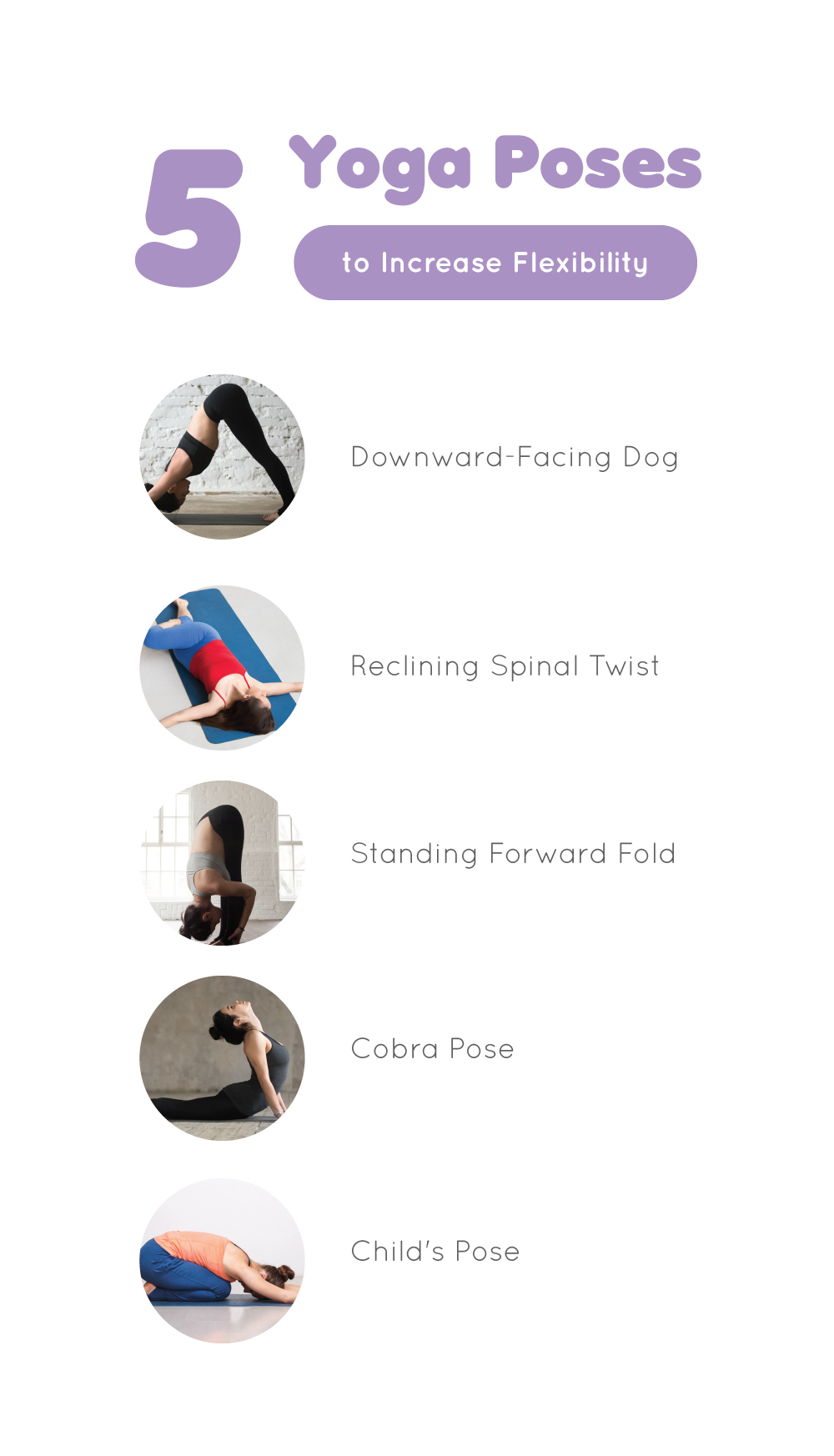
References:
1. https://health.ucdavis.edu/sportsmedicine/resources/flexibility_descriprion.html
2. https://www.ncbi.nlm.nih.gov/pmc/articles/PMC3445223/
3. https://www.ncbi.nlm.nih.gov/pubmed/20225995/
4. https://www.ncbi.nlm.nih.gov/pmc/articles/PMC5978284/
5. https://www.ncbi.nlm.nih.gov/pmc/articles/PMC5781189/
6. https://www.ncbi.nlm.nih.gov/pmc/articles/PMC4728955/
7. https://www.ncbi.nlm.nih.gov/pubmed/18673078
8. https://www.ncbi.nlm.nih.gov/pmc/articles/PMC6542302/
9. https://journals.humankinetics.com/view/journals/ijsnem/29/2/article-p189.xml


